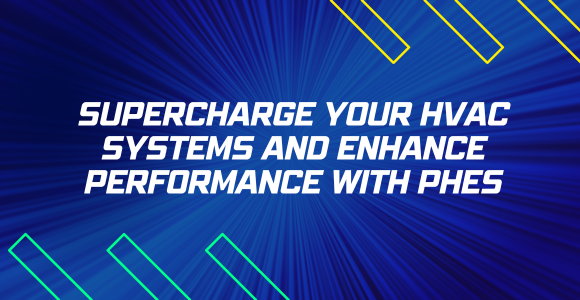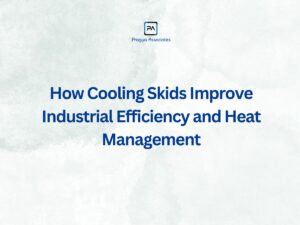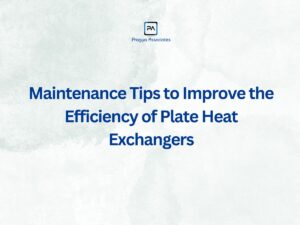Plate heat exchangers (PHEs) can revolutionise the performance of your HVAC system. With their efficient heat transfer capabilities, plate heat exchangers are the secret weapon to achieving optimal energy efficiency and improved indoor air quality. Let’s dive in and discover the benefits of these remarkable devices.
Understanding Plate Heat Exchangers
PHEs are the superheroes of heat transfer. These intelligent machines work on transferring heat between two fluids without mixing them. Picture a series of thin plates stacked together, creating narrow channels for the fluids to flow through. Due to their turbulent flow pattern, these plates maximise surface area and ensure efficient heat transfer. By harnessing the power of conduction, plate heat exchangers can deliver outstanding results.
Benefits of Plate Heat Exchangers in HVAC Systems:
1. Improved Energy Efficiency: Say goodbye to excessive energy bills! PHEs optimise heat transfer, reducing energy consumption by efficiently exchanging heat between fluids. It translates into substantial cost savings while maintaining a comfortable indoor environment.
2. Enhanced Heat Recovery: Waste not, want not! Plate heat exchangers excel at recovering waste heat from various sources, such as exhaust air or condensate. By harnessing this valuable energy, you can significantly increase your system’s efficiency and reduce environmental impact.
3. Compact Design: Space constraints? No problem! PHEs boast a compact design, making them ideal for installations with limited space. Their efficient and compact layout ensures maximum heat transfer while minimising the system’s footprint.
4. Improved Indoor Air Quality: Breathe in freshness! PHEs play a vital role in enhancing indoor air quality. By enabling fresh air ventilation without compromising energy efficiency, they ensure a constant clean air supply, free from pollutants and contaminants.
Applications of Plate Heat Exchangers in HVAC Systems:
1. Heating Applications: In heating systems, plate heat exchangers boost efficiency by transferring heat from a primary fluid to a secondary fluid, such as water or air. It enables efficient heat distribution throughout your space, keeping you cosy and warm during those chilly days.
2. Cooling Applications: PHEs are great when it comes to cooling. They do not just facilitate heat removal from the system but also ensure efficient cooling performance. They help maintain the desired temperature while conserving energy and extracting heat from the air or refrigerant.
3. Ventilation Applications: Fresh air is essential for a healthy environment. PHEs excel at providing fresh and clean air by exchanging heat between incoming and outgoing air streams. This process ensures proper ventilation and minimises energy loss, making it a win-win situation.
Considerations for Plate Heat Exchanger Selection:
Before incorporating a plate heat exchanger into your HVAC system, keep the following factors in mind:
1. Flow Rates and Pressure Drop: Matching flow rates and minimising pressure drop are crucial for optimal system performance. It is, therefore, important to ensure that the plate heat exchanger can easily handle the required flow rates without compromising the required efficiency.
2. Material Compatibility: Selecting the right plate materials is vital to ensure compatibility with your HVAC system’s fluids and operating conditions. Choose materials that resist corrosion, fouling, and other potential challenges.
3. Maintenance and Serviceability: PHEs are usually easy to maintain. However, one must opt for a model that allows easy access for cleaning and inspection, ensuring smooth operation and prolonging the system’s lifespan.
Integration and Installation of Plate Heat Exchangers:
Integrating a plate heat exchanger into your HVAC system is a seamless process. Follow these best practices to ensure a successful installation:
1. Seek professional guidance and consult with HVAC experts to determine the most suitable plate heat exchanger for your requirements.
2. Ensure proper alignment and connection of inlet and outlet pipes to maximise heat transfer efficiency.
3. Inspect and clean the plate heat exchanger to maintain optimal performance and prevent potential issues.
You can supercharge your HVAC system’s performance by harnessing the power of PHEs. These remarkable devices offer numerous benefits, including improved energy efficiency, heat recovery, compact design, and indoor air quality. For heating, cooling, or ventilation applications, PHEs are game-changers. So, why settle for the ordinary when you can optimise your HVAC system with extraordinary results? Upgrade your HVAC system with PHEs and experience the difference today!
To Know More About PHE Read Our Blogs
Plate Heat Exchangers: What are their types?




